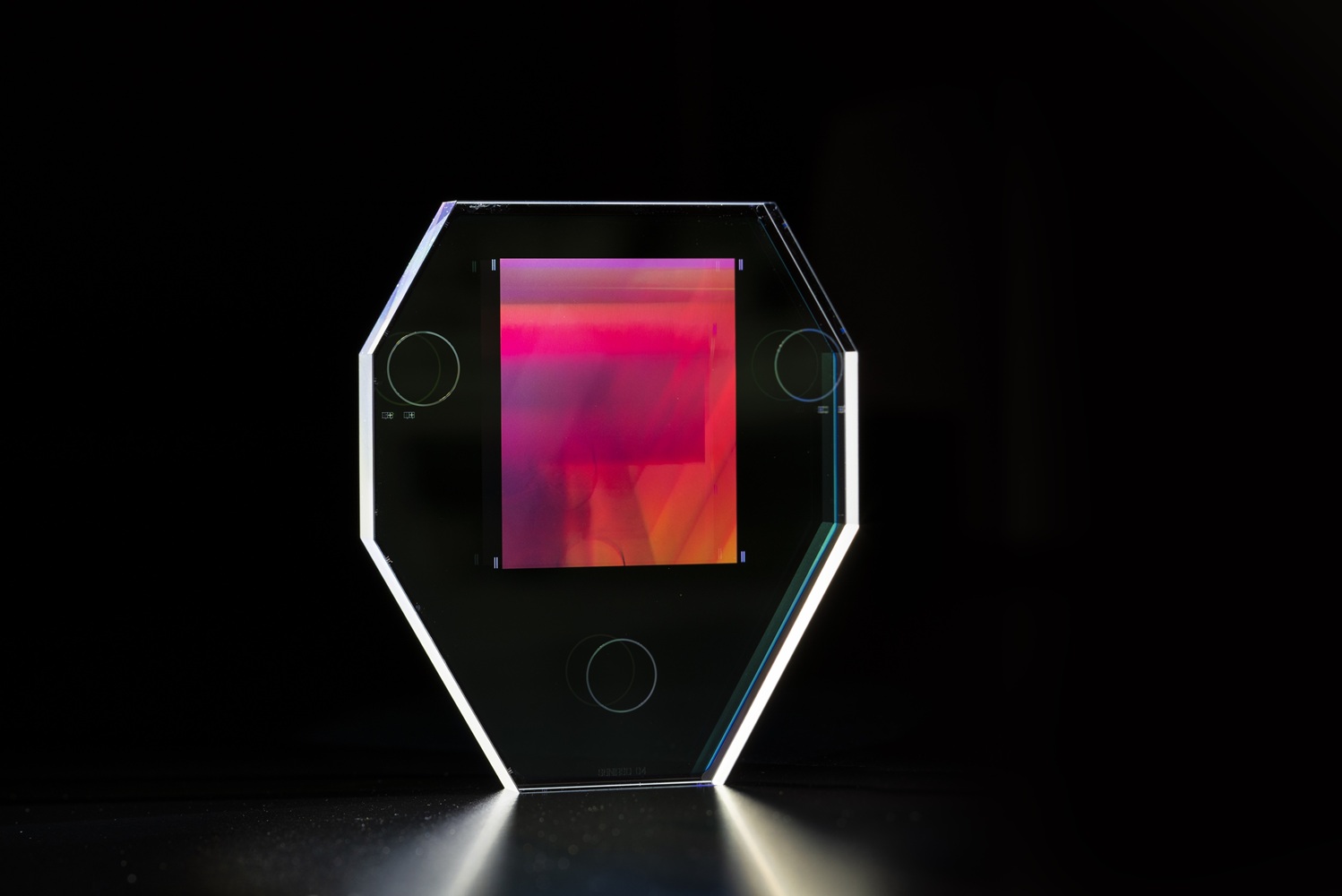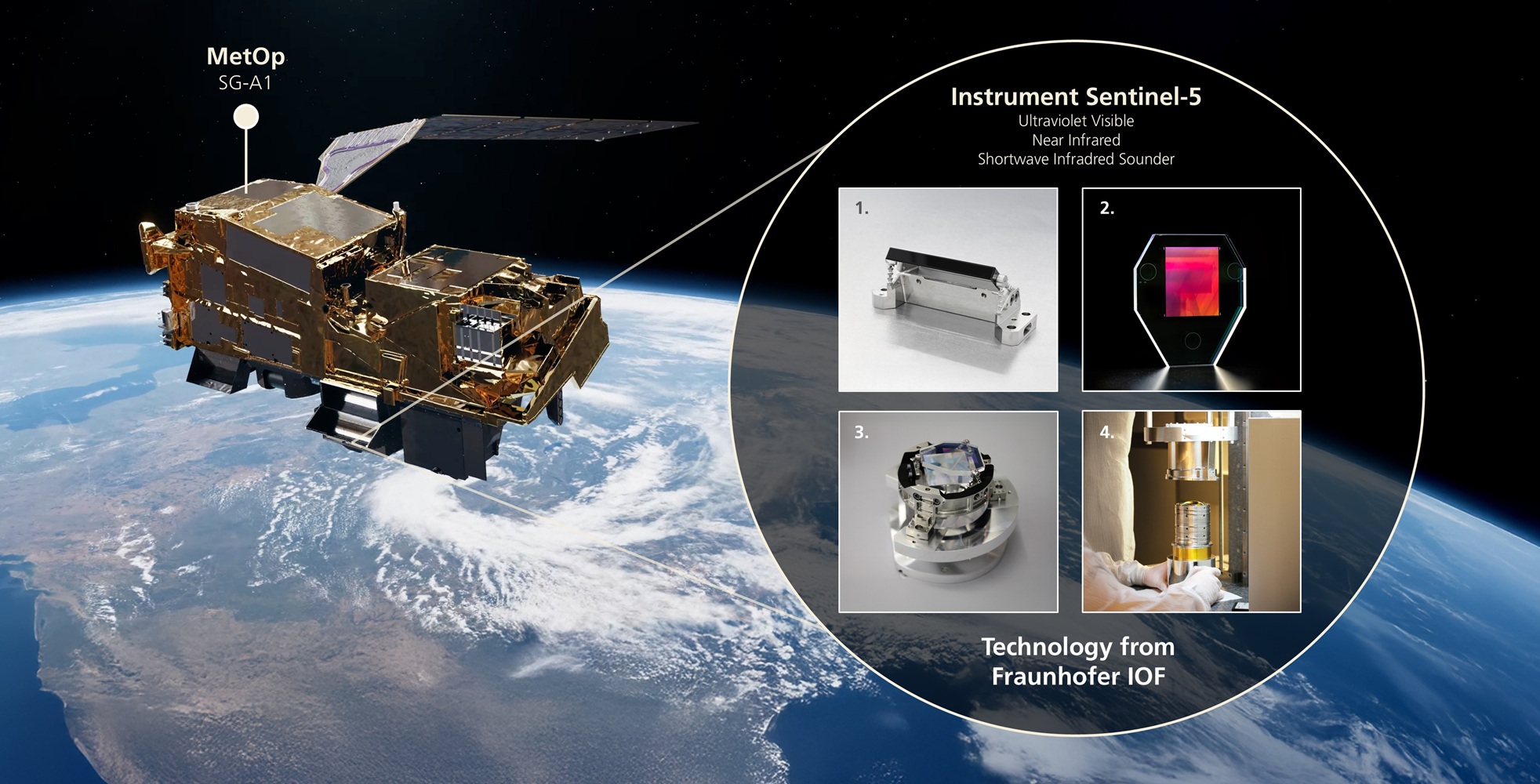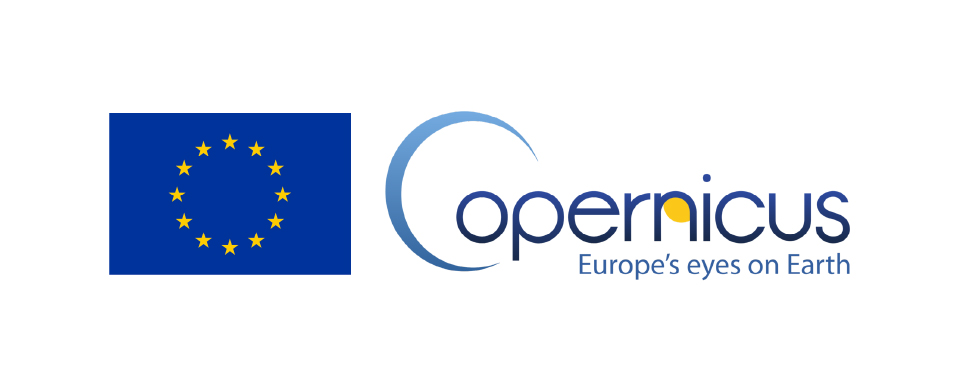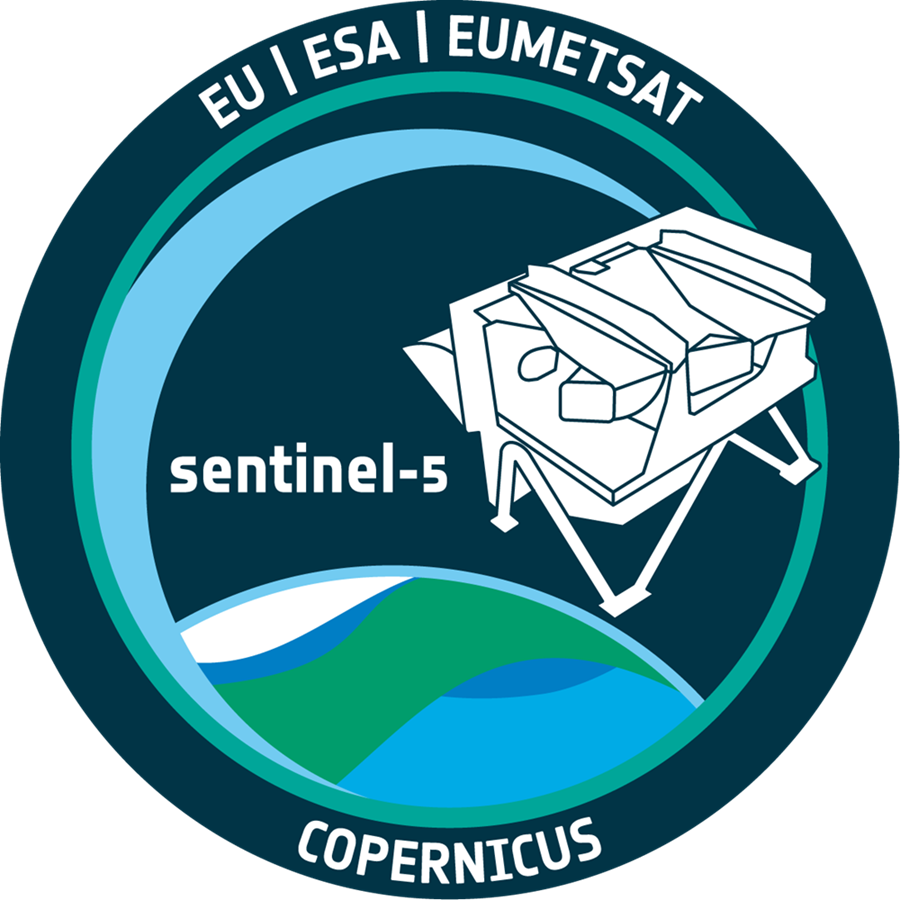Mission program for climate research continues to advance
ESA mission Sentinel-5 launches with optics from Jena
With Sentinel-5, the European Space Agency (ESA) is continuing its Copernicus program for climate research. The mission was successfully launched tonight. Once again, several optical components from the Fraunhofer Institute for Applied Optics and Precision Engineering IOF are on board.
Just a few months after the launch of Sentinel-4, Sentinel-5 is now the next mission in the Copernicus series to be launched into space. The Sentinel-5 instrument is not a standalone satellite, but an UVNS (“Ultraviolet Visible Near-infrared Shortwave”) spectrometer that was placed in low Earth orbit on an EUMETSAT Metop satellite. From there, Sentinel-5 will monitor global air quality, trace gases, and aerosols on a daily basis. With a spatial resolution of up to 7 × 7 km², climate researchers will be able to identify and analyze emission sources much more precisely than with previous satellite missions.
Sentinel-5 analyzes the light reflected from Earth in four spectral channels. Fraunhofer IOF contributed several optical components for the near-infrared channel (685-710 nm): a highly efficient spectrometer grating, space-qualified mounts, and an adjustable lens group.
Space-qualified mounting and assembly
The light is first captured by an entrance telescope and then directed into the instrument via a collimating lens and deflection mirror. These optics are held in place by isostatic mounts made of titanium, which were developed and manufactured at Fraunhofer IOF. (Fig. 1) "The mount must not transfer any mechanical stresses caused by integration and operating temperatures in space to the optics, as this would lead to deformation and thus impair their imaging quality," explains Andreas Kamm, Fraunhofer researcher in optical and mechanical system design. To prevent this, the researchers developed a two-stage adjustment and bonding process as well as special solid-state joint arrangements that mechanically decouple the optics from the mount and at the same time ensure that they survive the extreme conditions during rocket launch without damage.
Highly efficient transmission grating
The light then hits an assembly consisting of a prism and an optical grating. This grating was also manufactured at Fraunhofer IOF. (Fig. 2) "For Sentinel-5, we have manufactured a transmission grating with a particularly high diffraction efficiency of more than 95% and less than 2% polarization sensitivity," explains Dr. Falk Eilenberger, head of the Micro- and Nanostructured Optics department. "The grating consists of quartz glass into which precise grooves with a width of 197 nm were machined using electron beam lithography and reactive ion deep etching."
The optical grating is connected to a prism below it using a special mounting system that is technically similar to that used for the collimation lens and the deflection mirrors. (Fig. 3) At the same time, the mechanical requirements for this assembly were even higher, as Andreas Kamm explains: "The grating had to be adjusted with high precision in five degrees of freedom, with a wedge-shaped air gap to the prism, and this position had to be fixed in a stable and tension-free manner."



Precision-turned lens group
After passing through the prism-grating assembly, the split light finally hits a lens group (Fig. 4), which transmits it to the spectrometer's camera. Fraunhofer IOF also contributed its expertise here: the lens mounts with the lenses already glued in place were reworked using an alignment turning machine developed at the institute. This special process allowed the distances and alignments of the lenses to be adjusted to within a few micrometers.
Fraunhofer IOF: Continuous contributions to the Sentinel family
Fraunhofer IOF has been involved in various Sentinel missions for many years: The institute supplied optical filters for Sentinel-2 and a reflection grating for Sentinel-4. The institute also contributed three optical assemblies per satellite to the spectrometer for CO2M (Sentinel-7), a complementary mission in the Copernicus program.
"The Copernicus program is the EU's leading space program for better understanding our Earth and its climate. We at Fraunhofer IOF are proud that our optical assemblies and instruments in the various Sentinel missions contribute to precise weather forecasting and the understanding of climate change," explains Prof. Dr. Andreas Tünnermann, Director of Fraunhofer IOF.
Fraunhofer IOF's work on the components mentioned above was carried out in close and long-standing cooperation with Jena-Optronik GmbH.
This clip provided by ESA shows the inner workings of the Sentinel-5 instrument. The assemblies in which Fraunhofer IOF was involved can be seen between 01:06-01:10min. ESA/ATG medialab



Disclaimer: This article was carried out under a programme of and funded by the European Space Agency. The views expressed herein can in no way be taken to reflect the official opinion of the European Space Agency.

